Most people looking to stay healthy have an established routine that they have to follow regularly. But what about financial fitness? Like physical or mental health, you can establish a routine that will help keep your bank account healthy, thus giving you peace of mind and the guarantee of a better future. Given the importance of having sound financial fitness, most people would ask what healthy financial fitness or routine looks like? In this article, we will outline five crucial steps towards creating a sound financial fitness routine.
Create A Budget
I know this might sound like a cliché but creating a budget is fundamental for creating a sound financial fitness routine. When setting an account, make sure that you consider your income compared with your expenses. In this stage, list all your fixed expenses (rent/mortgage, utilities, insurance, and such) and other expenses that may vary over time, for instance, groceries. Still, on expenses, ensure that any regular payments you make towards debts like student loans or credit cards are also listed.
Having this list is essential as it ensures that you track your spending monthly and accurately. If you find that you are spending more than you are making on a month, you need to find ways to cut down the expenses. Either cut the expenses or find other income streams. Since the latter might be challenging, cutting down expenses is a reasonable move you can make.
Tip #1: tracking down your monthly expenses should be done as regularly as possible. To help you ensure that you have a spending diary to track where your money is going. Review several weeks of your spending to spot common expenses that you can cut down.
Tip #2: Remember, your income and spending affect everyone in your household. Therefore, make sure that you are creating a budget together with anyone in your family.
Please do not rush the process; it might take several weeks to understand how budgeting works and where your money is going. Do not be too hard on yourself. Just like creating a workout routine, it will take patience and determination.
Saving Should Be A Regular Habit
It should be fun too… it should be something you want to do! Set up an automatic deposit from your paycheck into your savings account as soon as you can. It doesn’t matter the amount. The good thing about this is that it helps you establish a saving habit without thinking about it. The money going to your savings account will serve as an emergency fund. Think about it building an emergency fund to cover unexpected expenses or even loss of income for just a few months will give you peace of mind and prevent you from overusing credit cards, which can be detrimental to your financial health.
Set realistic goals
Be as specific as possible when setting your financial goals. Whether you aim to increase your 401 (K) contributions, build your emergency cash pool or save for a large purchase, it helps to have your goals specific with measurable amounts and the dates you want to hit the targets.
Do a Weekly Check-in
It is not enough to create a budget or make sure you are saving regularly; there needs to be a follow-up. Every week, review how you are doing on your account. Are you on track, or are you overspending? If you are overspending, where did your expenses originate from? If you are on track, what has led to that? These are questions you need to ask yourself when reviewing your financial routine. Remember your spending diary? This is the point where it becomes a necessity; it can help you find your strengths and weaknesses.
This seems all easy to do, but practically it can be hard to maintain this;
· Avoid websites where you may be tempted to do impulse buying.
· Avoid using your credit cards. In fact, stack them up and lock them in a box that’s hard to get.
· Post your financial goals where you’ll see them before spending.
Use Your Credit Wisely
One of the most damaging elements to your financial health is credit, if used wisely, it could be a boost to your financial health, but it could ruin your financial health when misused. To improve your credit score, make sure that you are following acceptable credit practices. Here are some effective tips for you;
Tip #1: make sure that you are paying your credit card bills on time. It should be at least above the minimum balance due whenever possible.
Tip #2: Do not use more than 30% of your available credit.
Tip #3: make sure your accounts are active. This can be done through occasional small purchases on cards.
There are several ways through which you can use to score your credit. Some scoring models will scan your credit report at one point in time, giving a snapshot that’s limited in understanding your overall credit picture. VantageScore 4.0 is one of the most popular models often used by lenders. It is a model that takes advantage of trended credit data newly available from all the three national credit reporting companies. By capturing the trajectory of borrowing and payment behaviors, trended credit data provides a more precise, holistic view of consumer habits.
